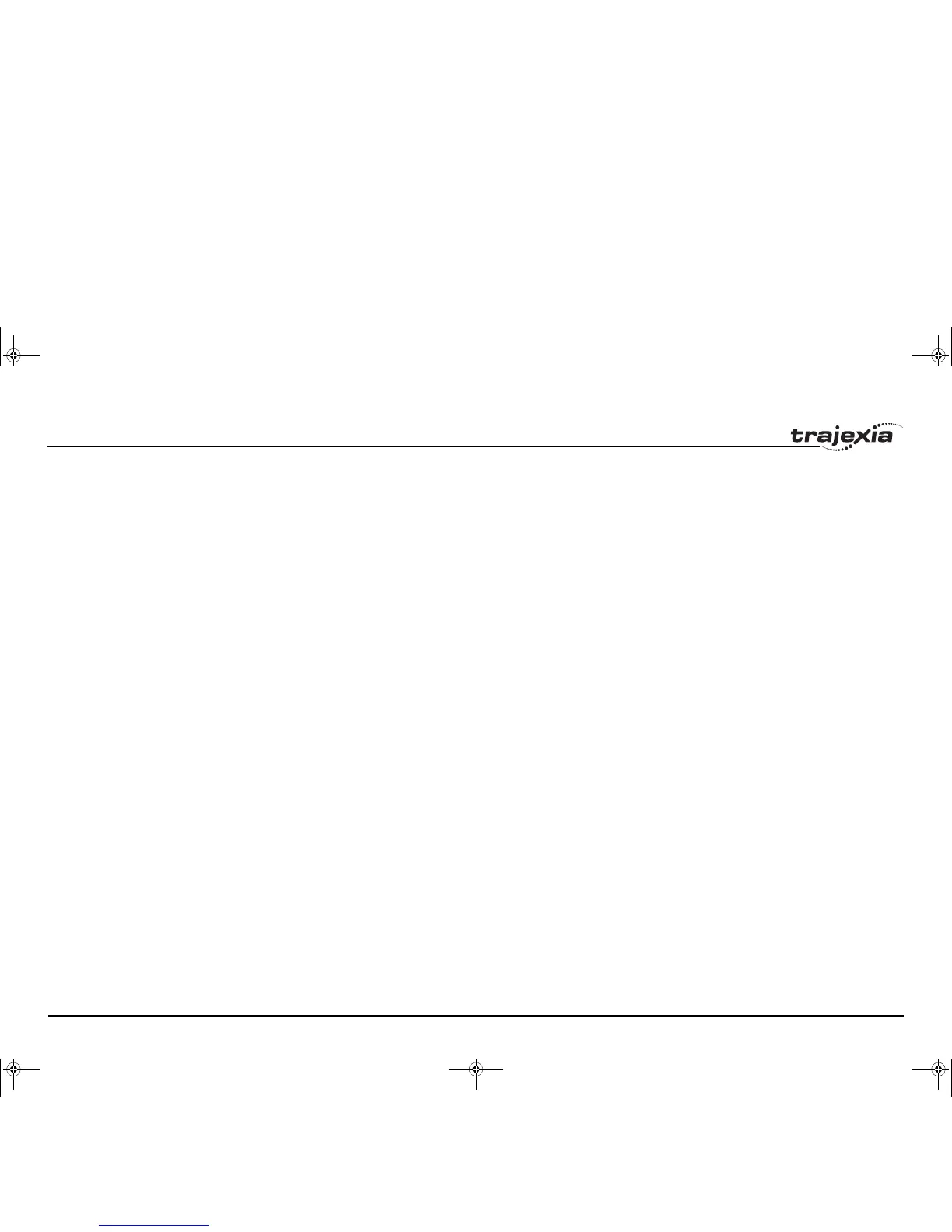BASIC commands
PROGRAMMING MANUAL 46
Revision 3.0
3.2.21 ADD_DAC
/i
3.2.22 ADDAX
/i
Type Axis command
Syntax ADD_DAC(axis)
Description The ADD_DAC command can provide dual feedback control by allowing a
secondary encoder to be used on the servo axis. The command allows the
output of 2 servo loops to be summed to determine the speed reference to the
Servo Driver.
This command is typically used in applications such as a roll-feed where a
secondary encoder would be required to compensate for slippage.
For using ADD_DAC it is necessary for the two axes with physical feedback
to link to a common axis on which the required moves are executed. Typically
this would be achieved by running the moves on one of the two axes and
using ADDAX or CONNECT to produce a matching demand position (DPOS)
for both axes. The servo loop gains need to be set for both axes. The servo
loop outputs are summed to the speed reference output of the servo axis. Use
ADD_DAC(-1) to cancel the link.
ADD_DAC works on the default basis axis (set with BASE) unless AXIS is
used to specify a temporary base axis.
Note:
1. Be aware that the control loop gains for both axes need to be determined
with care. As different encoders with different resolutions are used, the
gains are not identical.
2. Set the OUTLIMIT parameter to the same value for both linked axes.
Arguments • axis
The axis from which to sum the speed reference output to the base axis.
Set the argument to -1 to cancel the link and return to normal operation.
Example BASE(0)
OUTLIMIT AXIS(1) = 15000
ADD_DAC(1) AXIS(0)
ADDAX(0) AXIS(1)
WDOG = ON
SERVO AXIS(0) = ON
SERVO AXIS(1) = ON
' Execute moves on axis 0
This example shows controlling the Servo Driver axis 0 with dual feedback
control using both axis 0 and axis 1.
Example BASE(0)
OUTLIMIT AXIS(1) = 15000
ADD_DAC(1) AXIS(0)
ADDAX(0) AXIS(1)
WDOG = ON
SERVO = OFF
S_REF = 0
BASE(1)
SERVO = ON
' Execute moves on axis 1
This example shows controlling the Servo Driver axis 0 with using only
encoder feedback on axis 1.
See also AXIS, ADDAX, OUTLIMIT
Type Axis command
Syntax ADDAX(axis)
Description The ADDAX command takes the demand position changes from the superim-
posed axis as specified by the axis argument and adds them to any move-
ment running on the axis to which the command is issued.
After the ADDAX command has been issued the link between the two axes
remains until broken. Use ADDAX(-1) to cancel the axis link. ADDAX allows
an axis to perform the moves specified for 2 axes added together. Combina-
tions of more than two axes can be made by applying ADDAX to the superim-
posed axis as well.
ADDAX works on the default basis axis (set with BASE) unless AXIS is used
to specify a temporary base axis.
Arguments • axis
The axis to be set as a superimposed axis. Set the argument to -1 to can-
cel the link and return to normal operation.
I52E-EN-03.book Seite 46 Freitag, 29. Juni 2007 11:55 11
